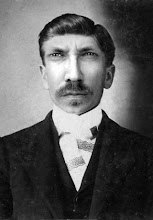
The editor plays an invisible part in a movie. The only people who know what goes on in a cutting room are the editor and the director, anybody else who happens to be there, the flies on the wall. You can't evaluate the work of an editor unless you are there, in the cutting room, because an editor can do wonderful things with a lot of bad footage, or he can perhaps destroy a lot of good footage, or a director may deserve much of the credit for the editing decisions, good or bad. There are all kinds of permutations, and you just can't put your finger on why it's a wonderfully edited movie or who exactly deserves the real credit. I'm in the academy and vote for the Best Editing Oscar every year, but my decisions are based more on intuition than knowledge, and I suspect that's true of the other voting members, too."
- Evan Lottman, editor on Apocalypse Now, Honeysuckle Rose, Sophie's Choice, 1992
(Photo: sequential stills from the tea party dream sequence in John Frankenheimer's Manchurian Candidate. "The dream sequence was one of the most amazing pieces of virtuosity film editing ever done. According to Frankenheimer, they shot the same scene four times, with four different combinations of circumstance." The Manchurian Candidate: A Photo Study)




No comments:
Post a Comment